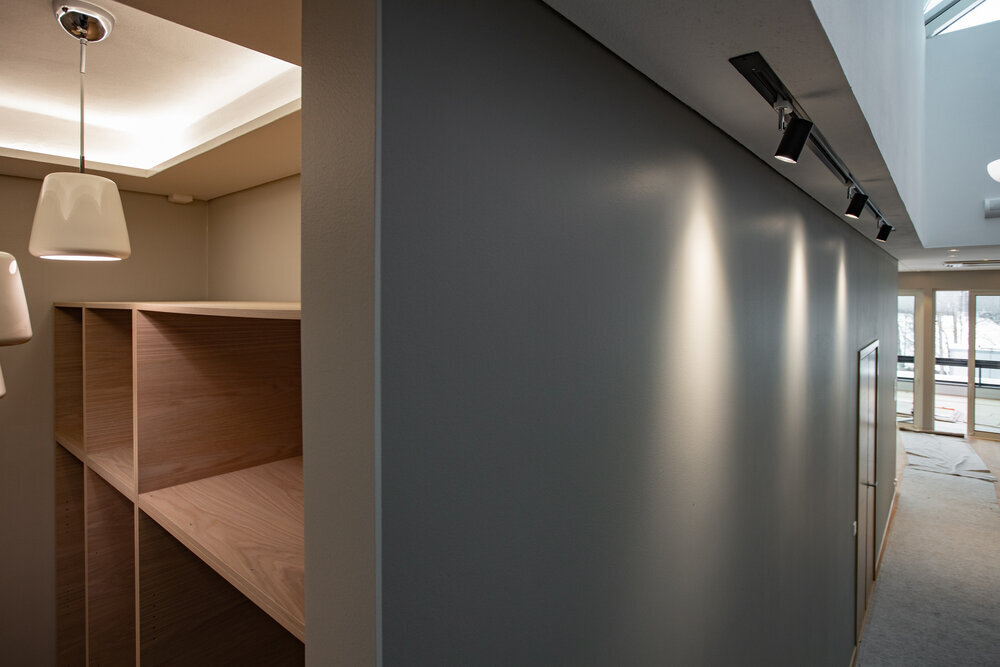Take over the basic concepts of lighting!
Watti, snow, kelvin... the conceptual jungle of lighting causes the head to spin. With this clear instruction, you will make it easy to buy a luminaire!
Amount of light, value of snow
The lumen value (lm) indicates how much light the lamp produces in its surroundings. The higher the lumen value, the brighter the lamp. How much snow you need to illuminate the room depends on the size and purpose of the room. For example, at least 5000 lumens are recommended for a 20-square-metre living room to provide enough light.
During the period when light bulbs were still used, the light intensity of the lamp could be assessed fairly well based on watts. However, watts only measure the energy used by the lamp. Since the LED lamp does not take as much power as a filament lamp, the wattage no longer indicates the brightness of the lamp.
Kelvinaste, colour temperature of light
The kelvin level determines the colour temperature of the light. The higher the qualification value, the colder, i.e. the bluer the light, the lamp produces. What light is worth choosing depends on your own preference and what kind of décor you want to create. As a guideline, you could say that log houses 2700 K and the most modern, Scandinavian interior design sites 4000K. Lamps with adjustable colour temperature according to the rhythm of the day (tunable white) are also available.
2700-3000 K, warm-toned white
The warm-toned, light bulb-like light is atmospheric and cozy, making it suitable for living areas such as living room or bedroom. Especially in the evening before going to bed, it is advisable to stay in warm-tinted light, as more obscure lighting prepares the body for a night's sleep.
4000-4500 K, neutral white
Neutral white is a good universal light that fits any space. It is cooler and also suitable for working and reading light. Choose neutral white for general lighting in the toilet, bathroom or kitchen, for example.
5000-6500 K, daylight
The color temperature of the midday sunlight is about 6,000 kelvins. At this color temperature, colors repeat naturally and the details stand out precisely. Daylight is an excellent working or reading light as it reduces eye strain. It is popular e.g. craftsmen. Daylight is also suitable as a make-up light.
Lyx (lx), lighting intensity
The illumination intensity represents the intensity of the light source on the illuminating surface and its unit is lys (lx). The lighting intensity depends, among other things, on the luminous flux of the lamp, the optical characteristics of the lamp and the distance from the surface to be illuminated.
One thrust is the illumination intensity provided evenly by the luminous flux of one lumen when spread over an area of one square metre (1 lx = 1 lm/m2). The further away the surface is from the light source, the lower the lighting intensity. For example, if the intensity is 100 driving at a distance of 1 meter, it is 25 driving 2 meters away and 4 lys are 5 meters away.
The amount of light that hits the surface determines, for example, how easily it is seen to read a newspaper or look for gloves at the bottom of the closet in the vein. Therefore, recommendations for the illumination intensity value are given for different spaces according to the intended use. In addition, the need for light intensity varies greatly depending on the age of the person. People over the age of 50 need twice as much light to read at dusk, for example, than those under 20.
Color playback, RA or CRI
The colour repetition capacity of the lamp affects the quality of the light. It tells you what the colors of furniture and other objects will look like in the light. The color retread is represented by a coloring index, or Ra index. The higher the number, the more naturally the colors repeat. For home use, the coloring index is recommended to be at least Ra 80.




